

 STUART JORDAN continues his globe-trotting look at railways around the world.
STUART JORDAN continues his globe-trotting look at railways around the world.
The story of railways in Spain begins much later than in the rest of Europe. Economic problems and mountainous terrain meant that Spanish industry was not expanding as quickly as elsewhere in Europe.
The first railway in mainland Spain (there was already a railway working on Cuba, then part of the Spanish Empire) was built in 1848 - a short line from Barcelona to Mataró, a town twenty miles up the coast. By 1863 lines had crossed the country to the Portuguese border, and a year later the French border was connected.
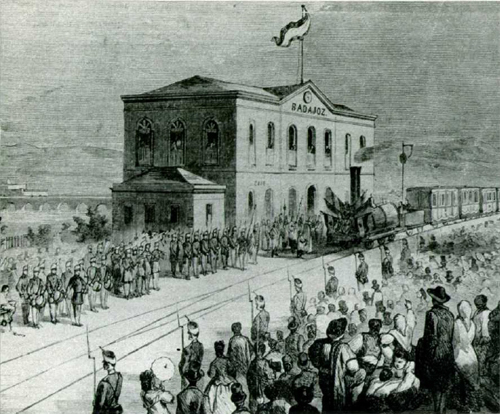
The Inauguration of the Badajoz line to the Portuguese border
In a move that would frustrate designers for decades afterwards, the early Spanish railway designers adopted a broad gauge of 1,672mm (5'513⁄16"), rather than the universally used Stevenson Standard Gauge of 1,435 millimetres (4'8½"). There are two reasons put forward for this, although the real reason is lost – either the broad gauge would allow for larger locomotives to pull trains through the country's mountainous terrain, or alternatively it was purely defensive. Tensions were high with France during the late 1800s, and if France invaded their rolling stock would be useless on the larger gauge track. A large Narrow Gauge network was built in the mountainous areas, built to metre gauge (1,000mm (3'33⁄8")).
The Spanish Civil War of 1936-39 lead to enormous damage to the railway network. From their inception railways had become vital for warfare, which lead to them becoming targets for the enemy. Destroying stock, lines, and bridges could hinder troop and supply movements.
Straight after the war the victorious Franco Regime nationalised the Broad Gauge network, with RENFE (Red Nacional de los Ferrocarriles Españoles—National, Network of Spanish Railways) formed in 1941. During the 1950s the Narrow Gauge lines were also nationalised, under a company called FEVE (Ferrocarriles de Vía Estrecha, which is Spanish for "Narrow-gauge railways"). During this period the network stagnated, with very little modernisation. Steam locomotives from the 1850s were still being used to pull express trains.
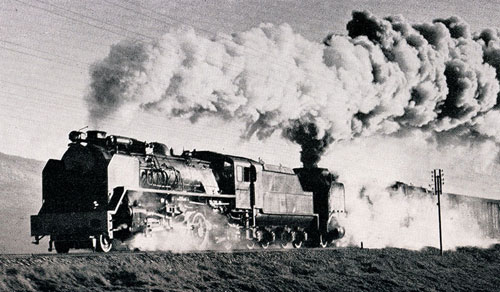
2-8-2 Steam Locomotive built by the North British Locomotive Works and bought by RENFE in 1953
Modernisation began in 1975 after Franco's death and the return to democracy, which was also the year that the last steam train left service. In 1986/7 many radial passenger routes were closed, with thousands of kilometres of track closed in an attempt to make the network more efficient.
As in France, in 2003 the infrastructure of the railways was separated into a separate state-owned company ADIF (Administrador de Infrestructuras Ferroviarias), with FEVE being folded into RENFE, who now owned and controlled all of the rolling stock on the network.
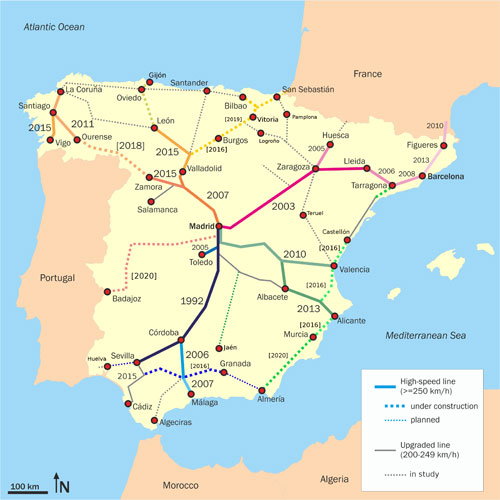
In 1992 Spain's first high speed line opened, built to Standard Gauge, linking Madrid and Seville. Amongst other lines, this was followed with a line from Madrid to Lleida in 2003, which was extended to Barcelona in 2008. in 2010 the newly built Perthus Tunnel opened for freight and passenger traffic, stretching 8km under the Pyrenees and linking Spain to the French TGV network - making it possible to have breakfast in London, travel by Eurostar to Paris for lunch, and then head south on the TGV to Barcelona for dinner.
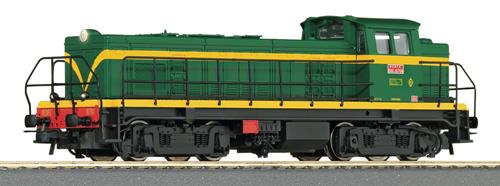
Roco RENFE Serie 10700 Diesel Locomotive III
Currently, several companies supply Gaugemaster with Spanish stock, for example: Arnold, Electrotren, Fleischmann, Minitrix, Piko, and Roco. All produce in HO Scale, although the Arnold, Fleischmann, and Minitrix ranges are mostly N Scale.
Electrotren RENFE 2nd / 3rd Class Coach III - Click image to enlarge
Noch produce suitable figures for Spanish layouts:
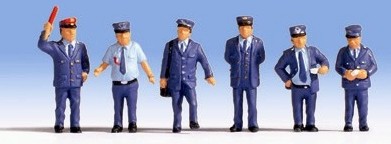
Noch Spanish Railway Staff (6) Figure Set